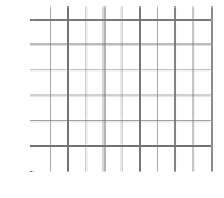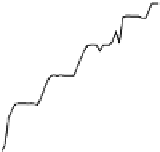Biomedical Engineering Reference
In-Depth Information
700
Reference Trajectory
Robot
Morphology
12
Robot-X
Robot-Y
Reference X
Reference Y
400
650
Robot
Reference
600
10
550
500
300
450
8
400
350
6
200
300
250
4
200
100
150
2
100
50
0
0
0
0.0
0.1
0.2
0.3
0.4
0.5
0.6
0.7
0.8
0.9
1.0
0
100
200
300
400
500
600
0.0
0.1
0.2
0.3
0.4
0.5
0.6
0.7
0.8
0.9
1.0
X-axis [px]
Normalized Time [-]
Normalized Time [s]
Figure 4.33
Catheter driven by robot: Insertion path projection in the XY-
plane compared with blood vessel morphology and reference
trajectory, catheter tip tracking in normalized time for both
axes, stress level variation in normalized time.
4.12 Summary
From our studies in photoelastic stress analysis, we can say that
vasculature modeling with photoelastic materials enabled to
visualize the stress produced by standard intravascular tools such as
guide wires, guide catheters, micro-coils and micro catheters. This
enabled different kinds of stress analysis to represent numerically
respect for tissue integrity during endovascular surgery simulator-
based training. The presented 3D scanner was able to register the
stress produced by the guide wire to the blood vessel wall; however,
several seconds are necessary to collect the data and calculate the
reconstruction of the three-dimensional model of the stress ield
and guide wire. This enables the study of the stress produced by
intravascular tools after being deployed, as a stent delivered in a
model of stenosis, but is a limitation for the real-time analysis of the
catheter progress. On the other hand, the bi-planar vision system
enabled to register the catheter trajectory in terms of the catheter
tip motion capture and tissue respect parameters at 3
fps. This
processing speed can be increased by reducing the resolution of the
analysis, by focusing the analysis to a region of interest or increasing
the computing power. This analysis area, time and resolution should
be conigured for speciic applications.
Photoelastic stress analysis made possible to visualize and
identify behaviors that may compromise tissue integrity by misuse
and repeated trials to achieve a task. Actually there are at least nine
catheters and guide wires driving devices [12], and an autonomous
catheter insertion system to reconstruct catheter trajectories













































































Search WWH ::

Custom Search